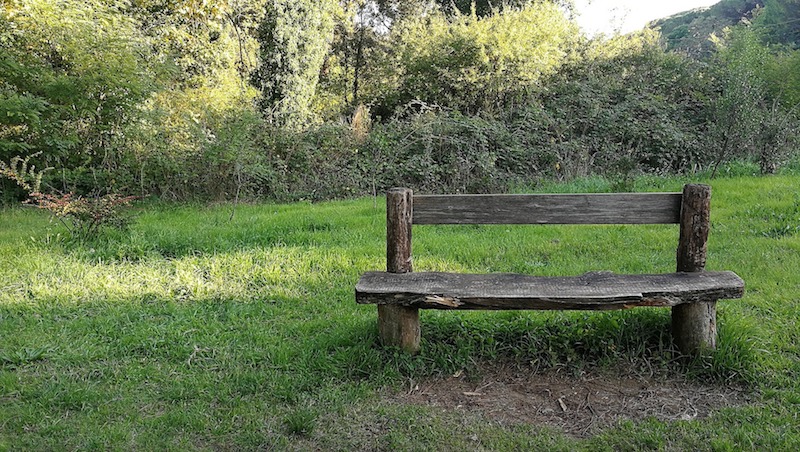Mindfulness offers a number of benefits such as reduced anxiety, improved thinking ability, and best of all, helping the brain minimize distractions.
But these benefits only show up after regularly practicing mindfulness, which may be the hardest part of being mindful.
Identifying Barriers to Being Mindful
There are a number of common barriers to practicing mindfulness. While they can sometimes feel like mountains, they are more like roadblocks that can be moved to the side.
By identifying which barriers stand between you and greater focus, you will have an easier time being mindful.
The classic text, the Yoga Sūtras of Patañjali, lists nine obstacles to a regular yoga practice. Mindfulness is a key part of traditional yoga, so many of these are also barriers to practicing mindfulness. These nine obstacles are:
- Vyādhi: physical illness. It is difficult to practice mindfulness when you don’t feel well.
- Styāna: mental inaction. This could be viewed as procrastination (distracting yourself to avoid being mindful) or feeling overwhelmed by how to get started with mindfulness.
- Saṃśaya: doubt or skepticism. If you aren’t certain about the benefits of mindfulness, it will be harder to practice, or you will do it half-heartedly.
- Pramāda: carelessness or negligence. Mindfulness is simple, but you still need to practice it systematically to see benefits.
- Ālaysa: laziness. We’ve all been there, when you’d rather lie on the couch binge watching your favorite show than keeping your attention focused on your breath.
- Avirati: cravings. Hunger, social time, getting outside, etc. … these can all distract you from being mindful.
- Bhrāntidarśana: a false or distorted perception of objects or events. One way this can show up is if you misunderstand what mindfulness is all about, like thinking you are supposed to eliminate all of your thoughts (which, by the way, is not true).
- Alabdhabhūmikatva: inability to know the real meaning and purpose of the practice. This has to do with knowing your goal for practicing mindfulness — what do you hope to get out of it? How does mindfulness work?
- Anavasthitatva: tendency to slide back. When you do finally have a moment of greater mindfulness, it’s really easy to lose it, especially when your mind gets stuck on thinking about how well you are at being mindful.
This list is not exclusive. In her book, Mindfulness, Katie Witkiewitz, Ph.D., a psychologist at the University of New Mexico, lists several others:
- Sleepiness
- Restlessness
- Difficulty finding a time and place to practice mindfulness
- Being too busy
- Lack of planning
- Difficulty finding mindfulness training, such as books, videos, audiobooks, teachers
Have any of these gotten in your way on the path toward greater focus and attention?
Even mindfulness apps, which are designed to make mindfulness easier to learn and more accessible, come with barriers.
In a study in the International Journal of Medical Informatics, researchers identified several common barriers faced by young adults using a mindfulness app. These included:
- busy lifestyles
- lack of routine
- strong negative emotions
- negative perceptions of mindfulness
Overall, being too busy was the largest barrier, followed by lack of routine. “Several participants also reported forgetting to use [the app] unless they had built use into their daily routine,” wrote the authors.
The participants also reported that negative emotions — especially feeling highly stressed or agitated — would sometimes get in the way of them using the app. “At these times, users reported frustration that they were unable to control their thoughts. Users frequently reported that the app was more difficult to use when stressed,” wrote the authors.
Overcoming Barriers to Practicing Mindfulness
Yes, there are a lot of potential barriers to practicing mindfulness. The good news is that you probably won’t experience all of them — at least not all at the same time.
The other positive note is that once you identify what’s preventing you from regularly practicing mindfulness, it’s easier to find a way to overcome them.
I won’t address all of them one-by-one, but here are some steps you can take to move these barriers out of the way so you can continue on your journey toward greater mindfulness:
- Adjust your expectations. Often we take on more than we are ready for. By being okay with small, incremental improvements in mindfulness, it’s easier to stick with the practice needed to achieve that.
- Opt for regular over occasional practice. Regular mindfulness practice should be your main goal. So ask yourself, “How many minutes can I realistically practice mindfulness on most days?” If that’s just one minute, start there. Once you have a habit of practicing mindfulness, you can look at increasing the length of your sessions.
- Find the right mindfulness practice. There are many different types of mindfulness practices, from focusing on the breath or walking meditation, to mindful baking or using a wearable mindfulness device. Take some time to choose one that fits your needs, your personality, and your schedule.
- Seek help. As an introvert, I’m more likely to go it alone than ask for help. But sometimes a trained teacher can speed things along by helping you find a practice that works for you and seeing obstacles in your life that you may not realize are there.
- Take care of your mental health. If anxiety, agitation, depression, or other emotions are getting in the way of being mindful, talk to a mental health professional. They can provide you with tools to help you manage those feelings — sometimes that tool is mindfulness training.



